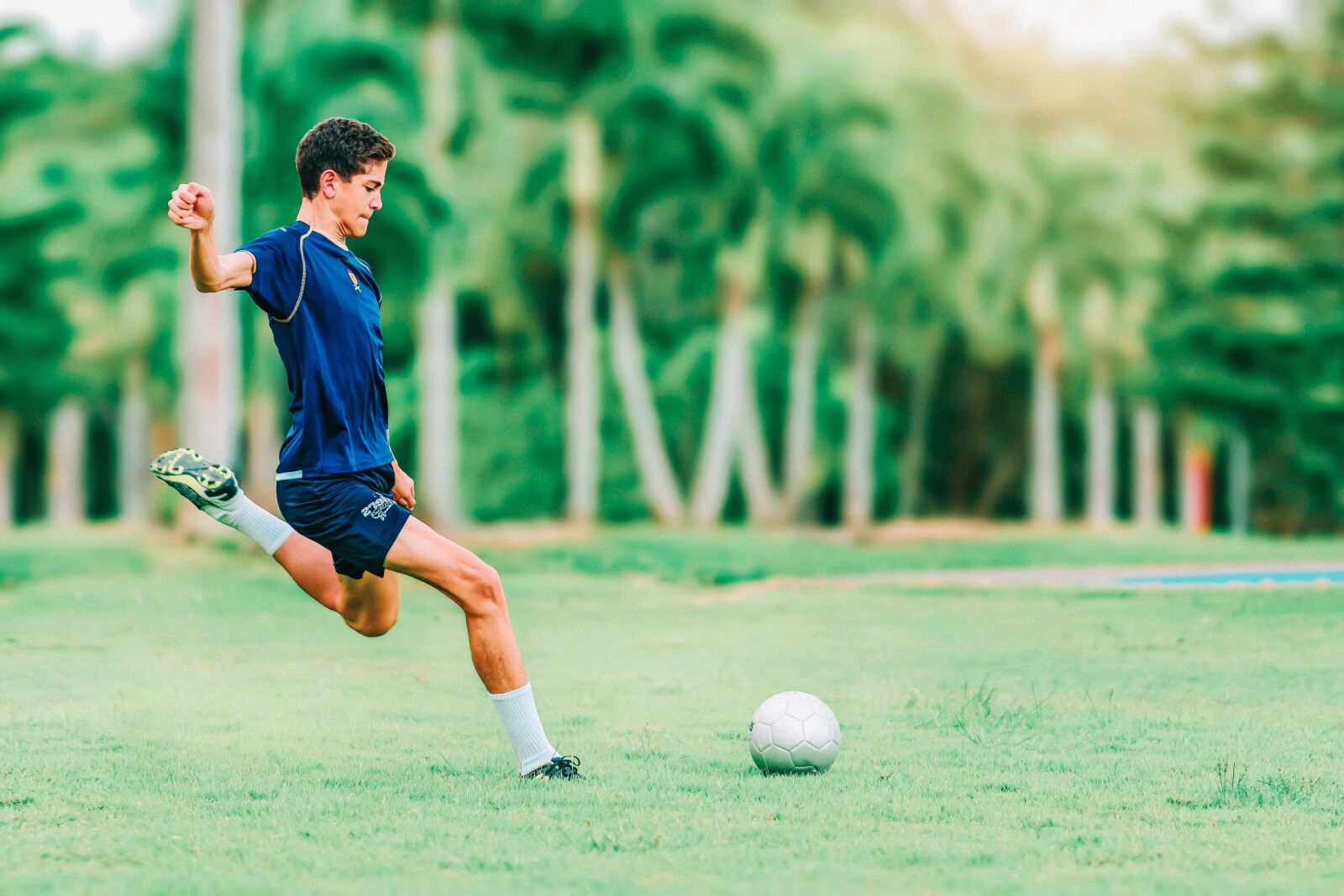Football Injuries and Lawsuits: Who’s Accountable
This article provides a comprehensive analysis of football injuries, potential legal implications, and preventative strategies. It aims to delineate the responsibilities of key stakeholders, while highlighting the importance of implementing effective safety measures. The article also examines notable lawsuits in this area, further emphasizing the severity of the issue. Ultimately, it serves as an informative guide for those involved in football, facilitating informed decision-making and encouraging a proactive approach to risk management.

Key Takeaways
- Football participation in the US has declined in recent years, with approximately 5.16 million people playing tackle football in 2018.
- Football is considered one of the most dangerous sports to play, with more than 341,000 football injuries requiring emergency room visits in 2017.
- Common football injuries include concussions and other brain injuries, sprains, strains, and fractures.
- Liability for football injuries can be determined based on factors such as negligence, coaches and trainers' responsibilities, assumption of risk, and product liability for faulty equipment.
Understanding the Football Participation and Injury Landscape
Analyzing the decline in football participation in recent years, we must consider the significant impact of reported injuries, and understand the role of negligence, duty of care, and risk assumption within the broader landscape of football participation and injury. Football participation trends indicate a marked decrease, largely driven by increased awareness and fear of concussions and other serious injuries. The impact of concussions in football, in particular, has been highlighted in recent medical and legal discourse, leading to enhanced protocols and safety measures. However, the issue of negligence and duty of care often surfaces, raising questions about the responsibility of coaches, trainers, and even equipment manufacturers, in ensuring player safety. This nexus of medical, legal, and ethical issues continues to shape the dynamics of football participation.
Identifying the Most Common Football Injuries
Delving into the realm of common football injuries provides an illuminating perspective on the hazards inherent in this high-impact sport, with concussions, sprains, strains, fractures, and heat-related conditions featuring prominently in the list. Heat-related injuries in football are prevalent, often due to inadequate hydration or excessive exertion in hot conditions. These can range from mild heat exhaustion to potentially fatal heat stroke. The effectiveness of concussion protocols in preventing brain injuries is a topic of ongoing debate. While such protocols have undoubtedly raised awareness and prompted earlier interventions, concussions remain a persistent issue. This reiterates the importance of adherence to safety rules, use of appropriate equipment, and the enforcement of stringent regulatory guidelines to mitigate these risks.
Establishing Liability for Football Injuries
In the context of football injuries, establishing liability can be a complex process, involving the examination of coaches' responsibilities, players' assumption of risk, and potential product liability for faulty equipment. Coaches play a crucial role in preventing football injuries, with their responsibilities extending to proper training, enforcement of safety protocols, and ensuring the use of safe, functioning equipment. However, the recent decline in football participation rates, largely attributed to concerns over injury risks, illustrates the inherent dangers. The assumption of risk by players is another pivotal aspect, as active consent to participate in a high-risk sport often complicates liability claims. Thus, to mitigate these concerns and enhance participation rates, a comprehensive understanding of factors influencing liability is essential, with a strong emphasis on the role of coaches and the equipment used.
Strategies for Preventing Football Injuries
To reduce the rate of football injuries, it is imperative to implement effective strategies such as proper training, consistent use of protective equipment, heat illness prevention measures, and stringent enforcement of safety guidelines. The importance of safety equipment cannot be overstated, as it significantly mitigates the risk of severe injuries. Trainers and coaches play a crucial role in this process. They are responsible for ensuring that players are adequately equipped and that they adhere to safety protocols. Furthermore, they should be skilled in identifying potential heat-related illnesses, which can be life-threatening. Additionally, coaches must instill a culture of safety, emphasizing that the health of the athlete is paramount. Ultimately, the reduction of football injuries necessitates a multifaceted approach that involves all stakeholders.
Exploring Specific Cases and Lawsuits in Football
Examining various high-profile lawsuits and specific cases in football helps shed light on issues of liability and accountability in the sport, particularly when it comes to player safety. One key issue is helmet lead tackling, a practice that has resulted in numerous injuries, including potentially debilitating spinal cord trauma. In some lawsuits, players have sought workers' compensation eligibility for injuries sustained during games or practices. These cases reveal a complex interplay of legal and medical factors. Determining liability requires a detailed understanding of the sport's inherent risks, coaching practices, and equipment safety standards. They underline the urgent need for stringent safety measures and revised rules to ensure player protection, thereby minimizing the legal risks for all stakeholders involved in the sport.
Analyzing Damages and Recoveries in Football Injury Cases
Within the realm of football injury cases, the scope of potential damages and recoveries is vast, extending from compensations for medical bills and lost wages to damages for pain, suffering, or even wrongful death. Assessing compensation varies on a case-by-case basis, primarily hinging on injury severity, the extent of negligence involved, and the impact on the victim's quality of life. Legal precedents play a pivotal role, setting a benchmark for compensatory awards. A meticulous examination of medical reports and expert testimonies is crucial to accurately estimate future medical costs and potential earnings loss. Despite an overarching duty of care, determining liability can be complex, often intertwined with factors such as waivers signed and the inherent risk associated with football.
Frequently Asked Questions
How Are Football Injuries Treated and What Is the Typical Recovery Time?
Football injuries, varying from concussions to sprains, are treated using a combination of rest, physical therapy, and in some cases, surgery. The recovery time depends upon the severity of the injury and individual's health. Injury prevention measures like proper training, conditioning, and use of appropriate gear are crucial. Rehabilitation techniques often involve a mix of strength exercises, flexibility training, and balance drills. Always, a healthcare provider should oversee the treatment and rehabilitation process.
What Are the Long-Term Health Effects of Repeated Football Injuries?
Repeated football injuries can have serious long-term health effects. Physically, players may experience chronic pain, loss of mobility, and an increased risk of conditions like arthritis. There's also a link between repeated head injuries and neurodegenerative diseases, such as CTE. Psychologically, the constant cycle of injury and recovery can lead to mental health issues like depression and anxiety. Incorporating injury prevention strategies can mitigate these risks, but they can't completely eliminate them.
How Can Parents and Players Evaluate the Safety Standards of Their Football League or School Team?
To evaluate the safety standards of a football league or school team, parents and players should inquire about coaching practices, specifically training in injury prevention and response. Furthermore, it's crucial to understand the league's enforcement of helmet standards, as proper equipment is key to minimizing risk. The adherence to established concussion protocols and the readiness to modify practices in extreme weather conditions also provide insight into a program's commitment to player safety.
How Have Changes in Football Rules and Regulations Impacted the Rate of Injuries in the Sport?
Changes in football rules, such as limiting certain types of dangerous tackles, have contributed to a decrease in severe injuries. Simultaneously, advancements in injury prevention measures, including improved helmet technology, have played a critical role in reducing concussions and other head injuries. Still, continuous evaluation and updates to these regulations are necessary to further minimize the risk of injuries, emphasizing player safety as a priority within the sport.
What Legal Rights Do Professional Football Players Have in Terms of Injury Compensation and Protection?
Professional football players have legal rights to injury compensation under workers' compensation laws. They are also protected by collective bargaining agreements that typically include health and safety provisions. However, compensation disputes often arise, particularly concerning long-term health issues like chronic traumatic encephalopathy (CTE). Players also have a right to injury prevention measures, such as proper equipment, training, and adherence to safety protocols. Legal recourse may be available if negligence in these areas can be proven.
Conclusion
In conclusion, understanding the intricacies of football injuries and relevant litigation is crucial for all stakeholders in the sport. Mitigating injury risks through prevention strategies, coupled with clear delineation of liability, may contribute to safer participation. Moreover, insightful analysis of specific cases may inform future practice. The onus is on all parties to ensure the sport is as safe as possible, with appropriate measures in place to deal with inevitable injuries and their legal repercussions.

This post has been generated by AI and was not reviewed by editors. This is Not legal advice. Please consult with an attorney.




